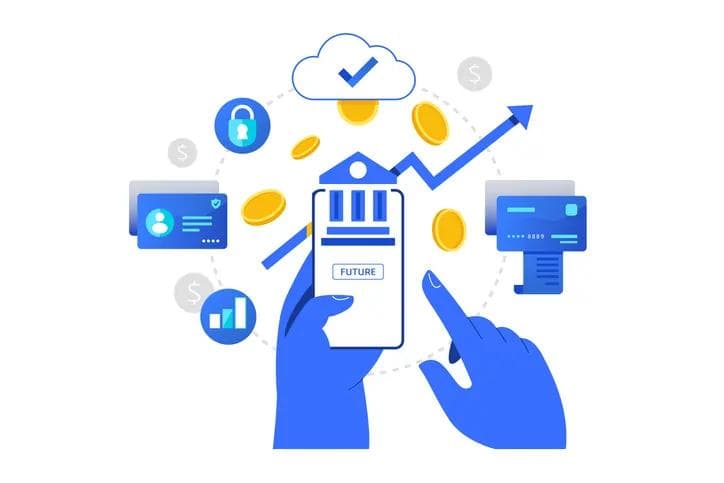Turning Insight into Impact: Making AI and Analytics Work in Retail Banking
Turning Insight into Impact: Making AI and Analytics Work in Retail Banking
Published by Wanda Rich
Posted on July 3, 2025

Published by Wanda Rich
Posted on July 3, 2025

by Joe Myers, EVP Global Banking, Diebold Nixdorf
Across industries, organizations are accelerating investments in data analytics and artificial intelligence (AI) to drive performance, elevate customer experience, and sharpen their competitive edge. These technologies promise transformative gains in retail banking—from personalized product offerings to real-time fraud detection. But while modern tools and platforms are indispensable, they represent just one part of the equation. The real differentiator lies in how financial institutions translate insight into action.
Insight Alone Isn’t Enough
I believe we can say that the financial industry is leading the way in generating rich insights from customer data, transactional patterns, or market trends. We are witnessing impressive implementations of AI technology and automation, such as the analysis of transactions within milliseconds to flag suspicious activities before completion, more accurate borrowers’ creditworthiness assessments, and the identification of customers at risk of leaving by analyzing behavioral patterns and transaction histories, just to name a few.
However, there is a risk of falling short when it comes to putting AI-generated insights to work on the ground. Dashboards can go unchecked. Reports can be buried in inboxes. Strategic models can sit disconnected from the frontline.
The result? Analytics potential remains untapped, and AI initiatives under-deliver on their promise.
The challenge is not the lack of data but the lack of operational integration. Insights must be accessible, relevant, and—crucially—embedded into daily workflows. This is where many companies should direct their focus: from building capability to driving adoption.
The Missing Link: Culture and Workflow
Technology alone won’t create change. To truly unlock value from AI and analytics, companies must invest in three critical enablers:
Tool + Workflow Alignment
Analytics tools must integrate seamlessly with everyday systems: CRMs, teller platforms, scheduling apps, and even internal messaging tools. If insights require a separate login, a PDF report, or extra effort to access—they are very unlikely to be used. Embedding insights into the systems employees already use is essential. If the insight isn’t available at the moment a decision is made, it’s a missed opportunity.
Data-Driven Culture
Company staff need to trust and understand the insights they receive. That requires building data literacy across the organization—not just among analysts. When employees see the why behind a recommendation, they are more likely to act on it. A best practice is conducting regular “analytics clinics” or feedback sessions between data teams and frontline staff to close the loop between model designers and users.
Measurement & Reinforcement
Track not just the output of AI models but the actual usage of insights. Which recommendations are followed? Which are ignored? Why? This feedback loop enables companies to refine both the insights and the way they are delivered. Use behavioral analytics to monitor adoption—and consider gamification or incentives to encourage ongoing engagement.
Operationalizing Analytics: Retail Banking in Action
Here are examples of successful initiatives I came across, bridging the gap between data insight and frontline execution.
Personalized Consumer Engagement at Scale
A European bank launched an AI-driven model to predict which consumers would likely need mortgage refinancing within the next 6 months. These predictions were embedded directly into CRM dashboards used by branch staff and call center agents. The bank saw a significant uplift in conversion on refinance offers. Why? Because staff acted on insights during natural interactions, not after the fact.
AI in the Service of Proactive Retention
A Southeast Asian retail bank deployed a churn prediction model to flag at-risk customers. Instead of limiting access to analysts, results were delivered to relationship managers via daily task lists and suggested actions based on past retention success. The frontline team could now take proactive, personalized steps—from offering better terms to flagging service friction points. The bank reduced customer attrition within one quarter of implementation.
Branch Optimization with Predictive Footfall Analytics
Another large North American bank used predictive analytics to forecast customer traffic by branch, day, and hour. But rather than keeping this insight confined to operations teams, it was shared with branch managers through scheduling tools, enabling smarter shift planning and real-time queue management. This allowed the bank to improve wait times, reduce staffing costs, and enhance the in-branch experience—all from one predictive model made actionable at the local level.
Final Thought: The Power of Embedded Intelligence
In retail banking, the power of AI and analytics doesn’t come from advanced algorithms alone, but from consistent, everyday action. When insights are delivered at the right time, in the right place, and in a format that drives behavior, financial institutions can realize measurable gains in efficiency, customer satisfaction, and profitability.
Simply put: The future of banking belongs not to those who generate the most insights, but to those who use them best.
Joe Myers, EVP Global Banking, Diebold Nixdorf

Explore more articles in the Banking category











